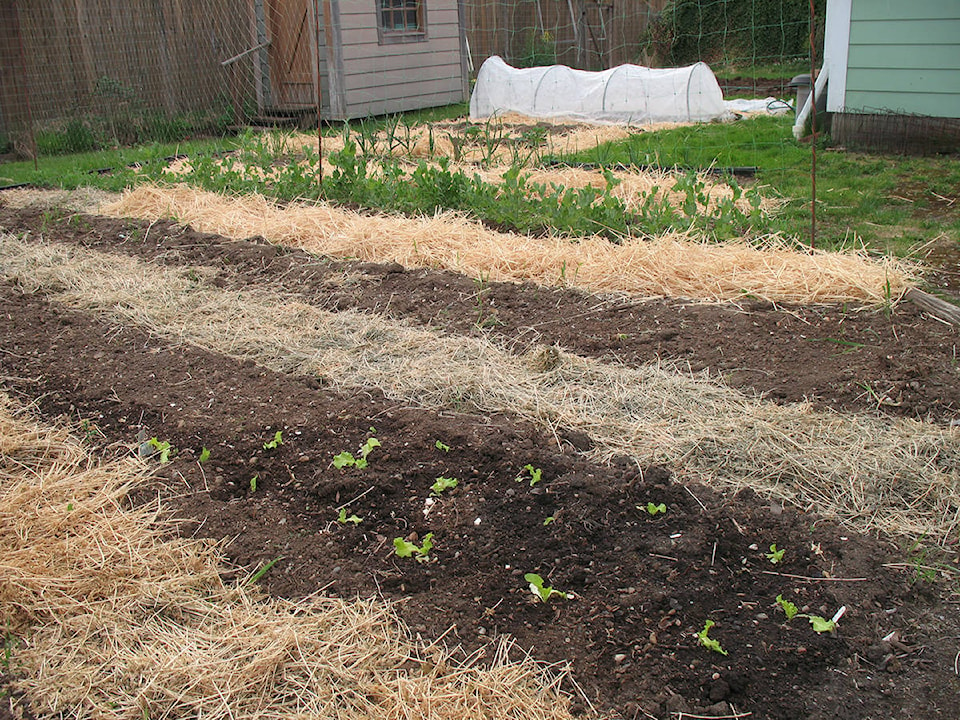By Mary Lowther
When I discovered that my yard was almost 100 per cent sand, it didn’t occur to me then that what I had was a substrate for hydroponic gardening. Some nutrients remained in the roots of over wintering cover crops, but most of the decent soil I’d been making washed out every winter. Every spring is almost a clean slate, so that’s when I dig in the cover crop and spread compost and fertilizer.
When I built the compost pile last fall, I added clay and rock phosphate so that, when combined with vegetation and some soil, the resulting humus plus organic fertilizer would replenish the garden. I follow hydroponic methods like compost tea and soil drenches which also work well for clayey gardens.
I’m starting the compost tea now, because it will take a week or so to be ready to use. I fill an old pillow slip with compost or vegetation, but I’m told that manure works as well. I haven’t become enough of a farmer yet to get that intimate with manure. My dad remembers seeing his neighbours argue over whose droppings those were on the streets in Sheffield after horses had clopped by, but I’m not at that point. Yet. Oh, I’ll shovel some onto a compost heap, confident that the resulting product will look and smell nothing like its inputs, but that’s as close as I’ll get.
Once the pillow slip is one third filled, I tie it up, toss it into my 10 gallon can, add a quarter cup of fish fertilizer, fill it with water, clap the lid on to keep out flies and let it sit for a week or so. Fish fertilizer adds nitrogen to the mix and encourages leaf development. Later in the season I’ll change to liquid kelp fertilizer because that encourages flower and fruit development.
This process results in anaerobic decomposition. True hydroponic growers, I’m told, aerate their compost tea by placing an electric aerator into the liquid that bubbles air into it, allowing aerobic bacteria to proliferate and create a nutrient solution much sooner than my method. I like to use as little electricity as possible, so I just let my compost and water ferment undisturbed. The result works very well as a spray and soil drench because my plants thrive and have not fallen prey to any diseases since I’ve been using it.
I doubt that I could garden on this soil without compost tea. It takes time to strain some into a bucket, dilute this till it looks like weak tea and apply the mixture to my plants, but the results are worth it. I spray the whole garden every two weeks: the side yard one week and the back yard the next. It’s important to dilute the tea because when it’s undiluted, the strong liquid can burn the plants. I did this once on cabbages and lost the whole crop.
I also drench the soil around larger plants like tomatoes and cucumbers every two weeks. I drilled quarter inch holes in several buckets that I place beside each prospective plant, then I pour in a litre of diluted compost tea and let it percolate down.
Overwintered cover crop and rich compost plus organic fertilizer and compost tea help retain water and nutrients in my sandy soil, producing robust plants resilient to drought, so come the summer we’ll still be harvesting plump, juicy vegetables.
Please contact mary_lowther@yahoo.ca with questions and suggestions since I need all the help I can get.
